Is Coffee Good For You or a Toxic Drink?
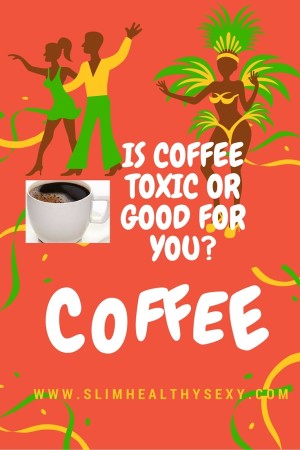
Coffee: Is is Good For You or a Toxic Drink? Yikes! When I started researching for this post, boy, did I hit a on a hot topic! Many people love their coffee and don’t you mess with their coffee.
Coffee is the second most traded commodity in the world right after crude oil. (Source: http://www.investorguide.com/article/11836/what-are-the-most-commonly-traded-commodities-igu/)
I was shocked when I found that out. No wonder there is a coffee shop on every corner.
I started to become suspicious of coffee a few years ago when I read a tiny article in the New York Times about a stowaway on a ship from South America who died when he was fumigated by accident as he was hiding in the hold where they were storing the coffee beans. What? Coffee beans are fumigated??? That didn’t sound good, in fact that sounded rather toxic.
Coffee beans must be fumigated by law either at the exporting port or the importing port to kill off rats, insects and the dreaded coffee leaf rust disease.
Coffee Gives Me Superpowers: An Illustrated Book about the Most Awesome Beverage on Earth
Chances are the coffee you now drink has been fumigated with Methyl Bromide, a known carcinogenic. Federal law states that all green coffee beans imported into the US are treated with Methyl Bromide. To avoid consuming this toxic chemical, drink only certified organic coffee.
250 Pounds of chemical fertilizers bathe your coffee beans
Did you know that coffee is one of the most chemically treated crops in the world?
According to the CS Monitor, up to 250 pounds of chemical fertilizers are sprayed per acre of non-organic coffee.
When you sip your conventional coffee, you are ingesting the pesticide residues, which contribute to many health problems including cancer and miscarriages in pregnant women.
Americans drink about 400 millions cups of coffee every day, and most of the coffee beans are imported. The U.S. Department of Agriculture actually has little control over the type and amount of pesticides used on imported coffee. The most effective way to protect against potential harm from the pesticides is to drink organic coffee.
What is “Organic Coffee”?
To qualify for USDA “organic” label, coffee farms must be certified, and must meet certain standards, including:
- No synthesized pesticides or any prohibited chemical substance have been used for the past 3 years.
- Natural pest control and prevention methods must be used.
- Use sustainable crop rotation to prevent nutrient loss in soil.
- Pass inspections and lab testing before it is made available for commercial use in the U.S.
- No GMO coffee beans used.
There are other requirements on how the beans and ready-to-use products should be processed and packaged.
Fair Trade vs Organic, Shade Grown, Bird Friendly
Don’t confuse organic coffee with fair trade coffee. Although there is an overlap, they are not the same.
Both fair trade and organic are regulated by the government, so coffee suppliers are not permitted to use the labels without meeting specific guidelines.
Fair trade refers to the way workers are treated.
Organic directly relates to growing, harvesting, and producing the coffee.
Fair trade coffee is grown by small farmers who are members of cooperatives that market to international firms. These growers are guaranteed a minimum price. Child labor and other unethical labor practices are banned.
Fair trade growers are encouraged to use organic practices, but it is not required.
Many fair trade coffees are organic and many organic coffees were grown under fair trade practices, but check for both specific labels to be sure.
Shade-Grown, Bird Friendly: Coffee is actually grown in the shade, but coffee makers cut down huge swaths of rainforest and douse the beans with chemicals to grow coffee more quickly.
Certified shade-grown coffee ensures you get chemical free beans and are not destroying the habitat.
Look for: Bird Friendly, Shade Grown, Rainforest Alliance, Fair Trade, or Equal Exchange certification, as well as Organic. (Source: http://www.healthyorganicwoman.com/)
How can you be sure the coffee you are drinking is organic?
Purchase coffee from a reputable health food store or from Amazon.com.
Here are a few of our favorites:
Death Wish Coffee
First Colony Fair Trade and Organic
WealthPreneur Coffee, Shade grown, Fair Trade, USDA certified ORGANIC
You will notice that the coffees suggested above are all coffee beans and not ground coffee. Coffee connoisseurs believe that coffee loses its robust flavor if it is not immediately brewed after grinding.
Where does coffee come from?
Mostly South America and Central America. Hawaii is the only state that grows coffee. Coffee trees are grown in shady areas for optimal production and the actual coffee cherries are handpicked. (Larger plantations (usually the ones that use all the pesticides) will use a mechanical method to pick the cherries. Once picked the cherries must be processed as soon as possible to resist spoilage. There are two methods for processing.
The Dry Method is the age-old method of processing coffee, and still used in many countries where water resources are limited. The freshly picked cherries are simply spread out on huge surfaces to dry in the sun. In order to prevent the cherries from spoiling, they are raked and turned throughout the day, then covered at night or during rain to prevent them from getting wet. Depending on the weather, this process might continue for several weeks for each batch of coffee until the moisture content of the cherries drops to 11%.
The Wet Method removes the pulp from the coffee cherry after harvesting so the bean is dried with only the parchment skin left on. First, the freshly harvested cherries are passed through a pulping machine to separate the skin and pulp from the bean.
Then the beans are separated by weight as they pass through water channels. The lighter beans float to the top, while the heavier ripe beans sink to the bottom. They are passed through a series of rotating drums which separate them by size.
After separation, the beans are transported to large, water-filled fermentation tanks. Depending on a combination of factors — such as the condition of the beans, the climate and the altitude — they will remain in these tanks for anywhere from 12 to 48 hours to remove the slick layer of mucilage (called the parenchyma) that is still attached to the parchment. While resting in the tanks, naturally occurring enzymes will cause this layer to dissolve.
When fermentation is complete, the beans feel rough to the touch. The beans are rinsed by going through additional water channels, and are ready for drying.
Before being exported, parchment coffee is processed in the following manner:
Hulling machinery removes the parchment layer (endocarp) from wet processed coffee. Hulling dry processed coffee refers to removing the entire dried husk — the exocarp, mesocarp andendocarp — of the dried cherries.
Polishing is an optional process where any silver skin that remains on the beans after hulling is removed by machine. While polished beans are considered superior to unpolished ones, in reality, there is little difference between the two.
Grading and Sorting is done by size and weight, and beans are also reviewed for color flaws or other imperfections.
Beans are sized by being passed through a series of screens. They are also sorted pneumatically by using an air jet to separate heavy from light beans.
Typically, the bean size is represented on a scale of 10 to 20. The number represents the size of a round hole’s diameter in terms of 1/64’s of an inch. A number 10 bean would be the approximate size of a hole in a diameter of 10/64 of an inch, and a number 15 bean, 15/64 of an inch.
Finally, defective beans are removed either by hand or by machinery. Beans that are unsatisfactory due to deficiencies (unacceptable size or color, over-fermented beans, insect-damaged, unhulled) are removed. In many countries, this process is done both by machine and by hand, ensuring that only the finest quality coffee beans are exported.
The milled beans, now referred to as green coffee, are loaded onto ships in either jute or sisal bags loaded in shipping containers, or bulk-shipped inside plastic-lined containers. World coffee production for 2015/16 is forecast to be 152.7 million 60-kg bags, per data from the USDA Foreign Agriculture Service.
Coffee has become recognized as a human necessity. It is no longer a luxury or an indulgence; it is a corollary of human energy and human efficiency.– William H. Ukers, All About Coffee (1922)
(If you want to check out a documentary about coffee click here.)
Once roasted, pretty much all coffee beans look the same. But did you know that there are actually dozens of different varieties of coffee beans? When it comes to your daily cup, though, there are really only two that matter: Arabica and robusta. These are the two primary types of coffee cultivated for drinking.
What’s the difference between the two? It’s significant, and it’s helpful to understand when choosing coffee.
The two varieties differ in taste, growing conditions, price. Arabica beans tend to have a sweeter, softer taste, with tones of sugar, fruit, and berries. Robusta, however, has a stronger, harsher taste, with a grain-like overtone and peanutty aftertaste. They contain twice as much caffeine as Arabica beans, and they are generally considered to be of inferior quality compared to Arabica.
Robustas, however, are easier to grow and are resistant to the coffee leaf rust. They can grow at lower altitudes than Arabicas, and they are less vulnerable to pests and weather conditions. They produce fruit much more quickly than the Arabicas, which need several years to come to maturity, and they yield more crop per tree.
Robusta is grown exclusively in the Eastern Hemisphere, primarily in Africa and Indonesia. Arabica is also grown in Africa and Papua New Guinea, but it’s grown dominantly in Latin America. Colombia only produces Arabica beans. Some countries, like Brazil and India, produce both.
Arabica, then, ends up being pricier, of course. Most supermarket coffee is exclusively Robusta, and instant and cheap ground coffees are certainly Robusta. You can still find Arabica in the grocery store, but just because it’s labeled Arabica does not mean it’s of high quality.
Today Vietnam has become a major Robusta coffee exporter and Starbucks is reportedly the world’s largest purchaser of Robusta coffees, with a virtual monopoly of Robusta coffee originating in Vietnam. (Source:http://www.barkingdogcoffee.com/our-coffee/arabica-vs-robusta/)
Robusta coffee is know for its burnt taste. Now you know why Starbuck’s coffee taste the way it does. (Note: Starbucks claims to use Arabica beans.)
Professional coffee taste-testers score the coffee on a scale of 1 to 7 for a series of attributes like aroma, sweetness, body, and balance.
|
Dunkin Donuts uses Arabica beans, which many coffee houses also use, but cheaper places that serve blends like Folgers don’t (they use Robusta). So if you’re brewing coffee at home or picking it up at the gas station (ick, ick) you’re going to get the more bitter blends. Also, Dunkin Donuts has high expectations for their coffee. They teach their workers about it, how to brew it, when to throw it out. Other places are more likely to keep the coffee sitting on the burner for longer. The fresher it is, the better it tastes. They take their coffee seriously…I think that’s the best way of describing why it always tastes good.
|
|
| Sources: https://www.dunkindonuts.com/aboutus/credenti |
Click here to find out where Green Mountain Coffee comes from.
How to brew the perfect cup for the particular coffee drinker.
Always start with freshly ground coffee. Here is a excellent coffee grinder.
The brewing temperature of the water used is very important. It should be between 195 F (91 C) and 205 F (96 C). The closer to 205 F (96 C) the better. Boiling water (212 F – 100 C) should never be used, as it will burn the coffee. Water that is less than 195 F (91 C) will not extract properly.
The Brewing Process Itself
There are two basic brewing concepts you need to understand, percolation and maceration. Percolation means water is allowed to flow around the particles and through the freshly ground coffee. Maceration means the ground coffee is soaked (or steeped) in the water.
Understanding the extraction process will enable you to learn how to brew coffee successfully. First, the grind of the coffee is crucial. The finer the grind, the more surface in relation to mass is exposed to the hot water. An un-ground coffee bean results in the least amount of surface area in relation to mass, and would be impossible to brew successfully. The tendency is to assume that the more finely coffee is ground, the better the resulting infusion will be. This is where you can destroy a good cup of coffee. If the grind is too fine, and the exposure too long, you’ll get much more than you want. Over-extraction of the aggregate will dissolve too many of the undesirable compounds, generally referred to as “bitters”. The trick is to get just what you want out of the coffee, and no more.
If you want to join the coffee fanatics, you can purchase green coffee beans and roast the
beans yourself. Yup! That’s right. There is a unique group of people who believe a great cup of coffee can only be obtained by roasting the beans yourself minutes before you grind and French Press your coffee. A great simple way to roast your own coffee is with using a popcorn roaster.
Okay, if you cannot imagine going through all this trouble in the morning before you go off to work, I certainly can understand. As I said, their is certain select group that will go this extreme to drink a perfect cup of coffee.
Storing coffee has long been debated. Do you store it in the freezer or in a Tupperware container in the cupboard? According to the coffee connoisseur, coffee should be stored in a dark, cool, dry place. Refrigerators have too much moisture for proper coffee storage.
The Health Benefits of Coffee
Studies have shown that coffee may have health benefits, including protecting against Parkinson’s disease, type 2 diabetes and liver disease, including liver cancer. It also appears to improve cognitive function and decrease the risk of depression.
However, the research appears to bear out some risks. High consumption of unfiltered coffee (boiled or espresso) has been associated with mild elevations in cholesterol levels. And some studies found that two or more cups of coffee a day can increase the risk of heart disease in people with a specific — and fairly common — genetic mutation that slows the breakdown of caffeine in the body. So, how quickly you metabolize coffee may affect your health risk.
Although coffee may have fewer risks compared with benefits, keep in mind that other beverages, such as milk and some fruit juices, contain nutrients that coffee does not. Also, adding cream and sugar to your coffee adds more fat and calories. Some coffee drinks contain more than 500 calories. (Source: http://www.mayoclinic.org/healthy-lifestyle/nutrition-and-healthy-eating/expert-answers/coffee-and-health/faq-20058339)
Why coffee may be bad for you?
Coffee is an amazingly potent collection of biologically active compounds.” Like any food-like substance, coffee has far reaching effects on the body and needs to be respected as a potent drug.~Dr. Walter C. Willet
- The caffeine in coffee increases catecholamines, your stress hormones. The stress response elicits cortisol and increases insulin. Insulin increases inflammation, and this makes you feel lousy.
- Habituation to caffeine decreases insulin sensitivity, making it difficult for your cells to respond appropriately to blood sugar. High blood sugar levels lead to arterial deterioration and increased risk of mortality related to cardiovascular disease.
- Unfiltered coffee has the highest amount of beneficial antioxidants yet also leaks the most diterpenes into your system. These diterpenes have been linked to higher levels of triglycerides, LDL and VLDL levels.
- The helpful chlorogenic acids that may delay glucose absorption in the intestine have also been shown to increase homocysteine levels — an indicator for increased risk of cardiovascular disease, which tends to be elevated in diabesity.
- The acidity of coffee is associated with digestive discomfort, indigestion, heart burn, GERD and dysbiosis (imbalances in your gut flora).
- Addiction is often an issue with coffee drinkers and makes it really difficult to rely on the body’s natural source of energy. Ask any coffee drinker about how it feels to withdraw from coffee, and you will mistake their story for that of a drug addict’s…
- Associative addictions trend with coffee — who doesn’t immediately think of warm, frothy sweet cream and sugar when they picture coffee? Surely the business of coffee has inspired a culture addicted to the sugary, fatty tastes of what has become more of a meal than a drink! That morning latte is the epitome of food lacking nutrition density yet packing energy!
- 5-HIA, an organic acid and component of the neurotransmitter serotonin (the happy chemical) seen in the urine tends to be elevated in coffee drinkers, which means they may be at risk for lower levels of serotonin synthesis in the brain. Serotonin is necessary for normal sleep, bowel function, mood, and energy levels. It is a vicious cycle, as caffeine can disrupt sleep and promote anxiety and depression. We all know someone who tends to be tired, wired and over-caffeinated!
- Elevated urinary excretion of important minerals such as calcium, magnesium and potassium have been noted in coffee drinkers. An imbalance in your electrolyte status can lead to serious systemic complications.
- Constituents in coffee can interfere with normal drug metabolism and detoxification in the liver, making it difficult to regulate the normal detoxification process in the liver. Another issue to be aware of with coffee intake is how certain medications such as levothyroxine (thyroid) as well as tricyclic antidepressants are poorly absorbed, making symptoms curiously worse for patients.
- Coffee will stain your teeth a lovely brown and give you the dreaded coffee breath. However, people can know counteract that by applying teeth whiteners and using breath mints. (Source: http://www.hungryforchange.tv/article/10-reasons-to-quit-coffee-plus-healthy-alternatives)
Why is coffee so addictive?
Structurally, caffeine closely resembles a molecule that’s naturally present in our brain, called adenosine (which is a byproduct of many cellular processes, including cellular respiration)—so much so, in fact, that caffeine can fit neatly into our brain cells’ receptors for adenosine, effectively blocking them off. Normally, the adenosine produced over time locks into these receptors and produces a feeling of tiredness.
When caffeine molecules are blocking those receptors, they prevent this from occurring, thereby generating a sense of alertness and energy for a few hours. Additionally, some of the brain’s own natural stimulants (such as dopamine) work more effectively when the adenosine receptors are blocked, and all the surplus adenosine floating around in the brain cues the adrenal glands to secrete adrenaline, another stimulant.
For this reason, caffeine isn’t technically a stimulant on its own, says Stephen R. Braun, the author or Buzzed: the Science and Lore of Caffeine and Alcohol, but a stimulant enabler: a substance that lets our natural stimulants run wild. Ingesting caffeine, he writes, is akin to “putting a block of wood under one of the brain’s primary brake pedals.” This block stays in place for anywhere from four to six hours, depending on the person’s age, size and other factors, until the caffeine is eventually metabolized by the body.
In people who take advantage of this process on a daily basis (i.e. coffee/tea, soda or energy drink addicts), the brain’s chemistry and physical characteristics actually change over time as a result. The most notable change is that brain cells grow more adenosine receptors, which is the brain’s attempt to maintain equilibrium in the face of a constant onslaught of caffeine, with its adenosine receptors so regularly plugged (studies indicate that the brain also responds by decreasing the number of receptors for norepinephrine, a stimulant). This explains why regular coffee drinkers build up a tolerance over time—because you have more adenosine receptors, it takes more caffeine to block a significant proportion of them and achieve the desired effect.
This also explains why suddenly giving up caffeine entirely can trigger a range of withdrawal effects. The underlying chemistry is complex and not fully understood, but the principle is that your brain is used to operating in one set of conditions (with an artificially-inflated number of adenosine receptors, and a decreased number of norepinephrine receptors) that depend upon regular ingestion of caffeine. Suddenly, without the drug, the altered brain chemistry causes all sorts of problems, including the dreaded caffeine withdrawal headache.
The good news is that, compared to many drug addictions, the effects are relatively short-term. To kick the thing, you only need to get through about 7-12 days of symptoms without drinking any caffeine. During that period, your brain will naturally decrease the number of adenosine receptors on each cell, responding to the sudden lack of caffeine ingestion. If you can make it that long without a cup of joe or a spot of tea, the levels of adenosine receptors in your brain reset to their baseline levels, and your addiction will be broken.(Source: http://www.smithsonianmag.com/science-nature/this-is-how-your-brain-becomes-addicted-to-caffeine-26861037/#5OpGLUzr4ZvcblUT.99)
It’s a wise experiment to provide yourself a break from coffee intake and see what it feels like to live your life on your own fuel. Remove coffee and caffeine safely from your system and see how authentically energized you feel!
Conclusion: The jury is still out on whether coffee is good or bad for you. However, if you drink coffee I would definitely chose to drink only organic coffee.
Thanks for reading. Comment below,


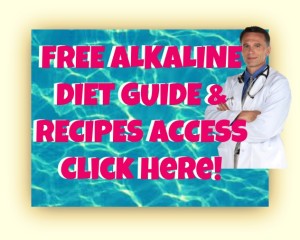
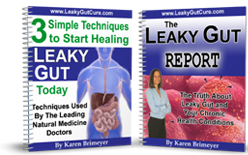
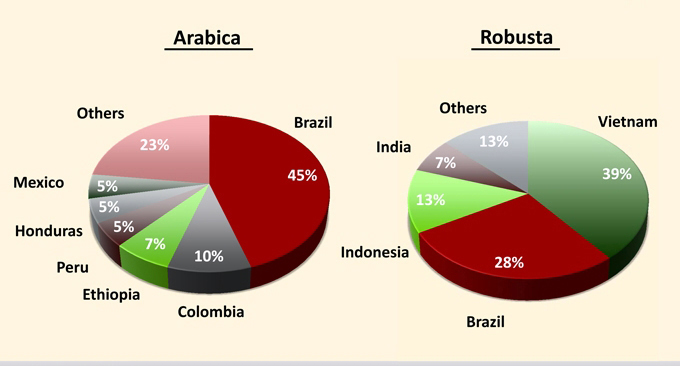
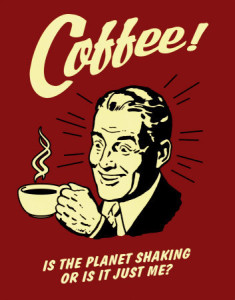
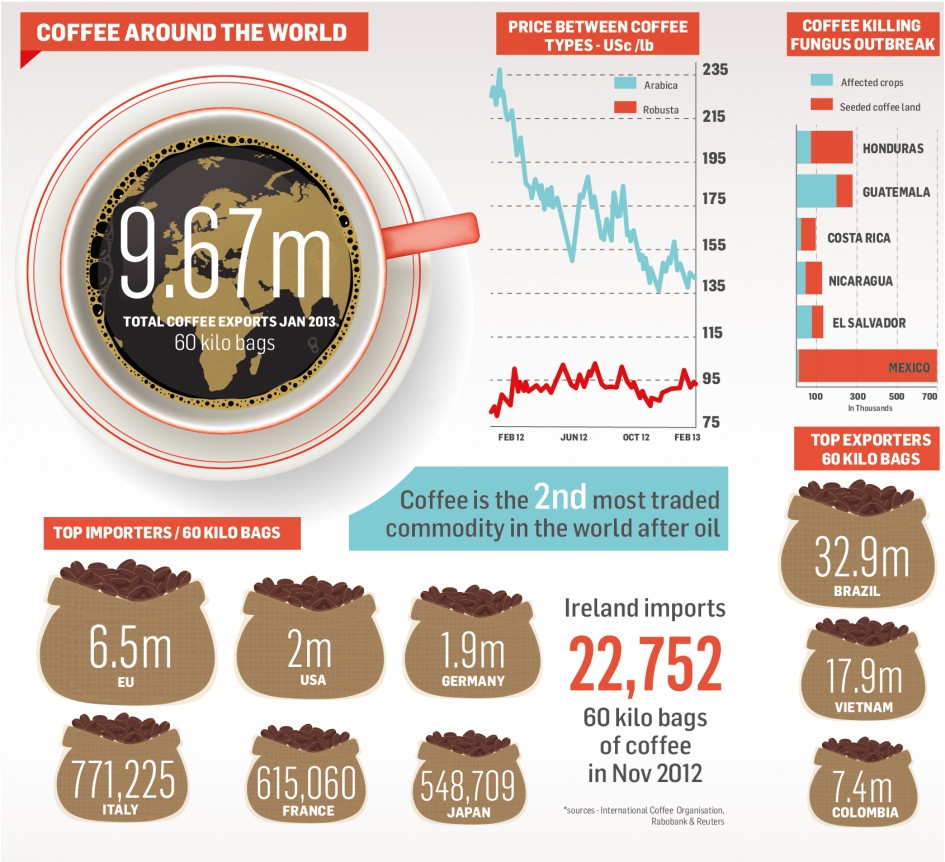

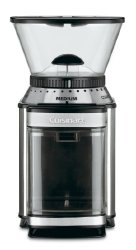
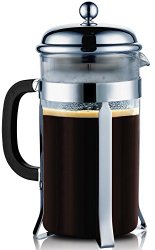

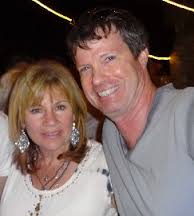
 D5 Creation
D5 Creation